The Fight for a Legacy: Jewish Resistance in Warsaw
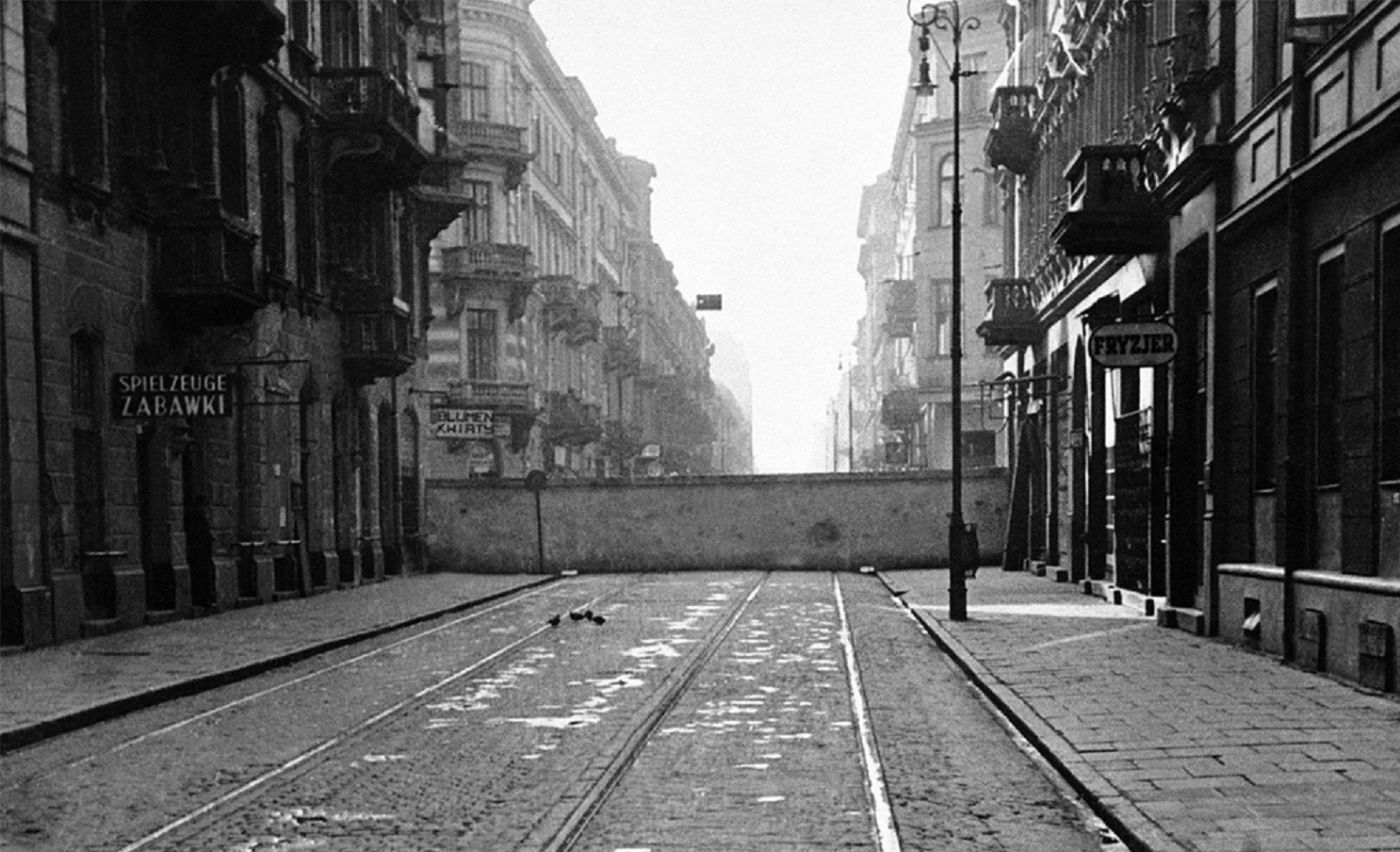
The Nazi forces intended to begin the liquidation of the Warsaw ghetto on April 19, 1943, the eve of Passover. When SS and police units entered the ghetto that morning, the streets were deserted. Nearly all of the residents had gone into hiding places or bunkers. The renewal of deportations became the signal for an armed uprising within the ghetto.
An armed self-defense unit known as the Jewish Combat Organization (Zydowska Organizacja Bojowa; ZOB) made up of members from different Zionist youth movements had decided to work together to oppose German attempts to destroy the Warsaw Ghetto. Deportations of Jews had begun on July 28, 1942.
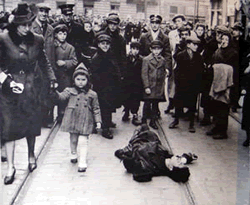
On January 18, 1943, a group of Jewish fighters, armed with pistols, infiltrated a column of Jews being forced to the Umschlagplatz (transfer point) and, at a prearranged signal, broke ranks and fought their German escorts. Most of these Jewish fighters died in the battle, but the attack sufficiently disoriented the Germans to allow the Jews arranged in columns at the Umschlagplatz a chance to disperse. After seizing 5,000-6,500 ghetto residents to be deported, the Germans suspended further deportations on January 21.
Encouraged by the apparent success of this first act of resistance, members of the ghetto population began to construct subterranean bunkers and shelters in preparation for an uprising should the Germans attempt a final deportation of all remaining Jews in the reduced ghetto.
There was little prospect of being saved, and victory was unlikely. The fighters of the ghetto were determined to avenge the murder of the Jews with a response of dignity and significance. Made up of Jewish youth ranging from 14-40 in age, the majority of the members came from the Zionist groups who transferred their desire for emigration to Palestine into a pioneering effort of physical resistance.
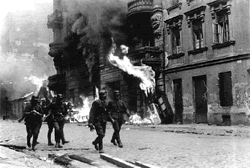
ZOB commander Mordecai Anielewicz commanded the Jewish fighters in the Warsaw ghetto uprising. Armed with pistols, grenades (many of them homemade), and a few automatic weapons and rifles, the ZOB fighters stunned the Germans and their auxiliaries on the first day of fighting, forcing the German forces to retreat outside the ghetto wall. German commander SS General Jürgen Stroop reported losing 12 men, killed and wounded, during the first assault on the ghetto.
This was the first popular uprising in a city in Nazi-occupied Europe. The fight lasted for nearly four weeks.
At first the superiority of the resistance was clear, and the Nazis suffered many losses. Three long days of battles between streets took place. On the third day of the uprising, Stroop's SS and police forces began burning and razing buildings, block by block, turning the ghetto into a firetrap to force the remaining Jews out of hiding.
The Nazis greatly outnumbered the resistance in soldiers and weapons, so that the hundreds of fighters, with only hand revolvers, had no chances. However, the Jewish fighters didn't surrender, and even survivors in shelters did not exit them despite the calls and promises.
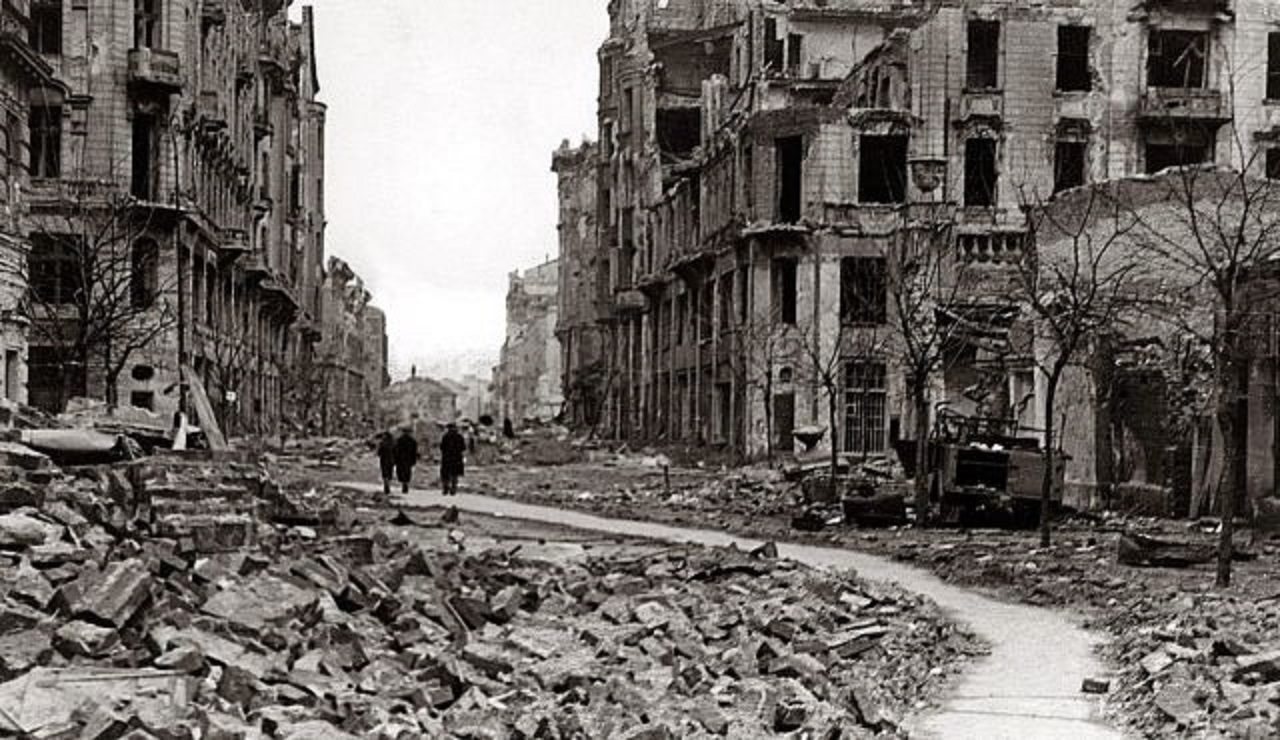
Jewish resistance fighters made sporadic raids from their bunkers, but the Germans had systematically reduced the ghetto to rubble.
In a last letter to a friend, Anielewicz wrote on April 23, 1943:
Be well, my friend! Perhaps we will see one another again. The most important thing is that my life's dream has come true. Jewish self-defense in the ghetto has been realized. Jewish retaliation and resistance has become a fact. I have been witness to the magnificent heroic battle of the Jewish fighters.
The German forces killed Anielewicz and those with him in an attack on the ZOB command bunker on 18 Mila Street, which they captured on May 8.
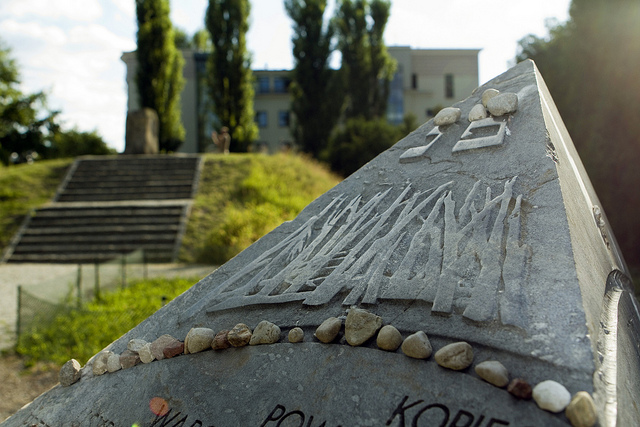
Copyright © Michael Rajzman
The bunker at Mila Street was the largest in the ghetto. It is a place of rest of over one hundred fighters, only some of whom are known by name. Here they rest, buried where they fell, to remind us that the whole earth is their grave.

The last Jews of the ghetto were sent for deportation to Treblinka, Majdanek, and Auschwitz. On May 16, 1943, General Jurgen Stroop could report that the Ghetto was defeated and "there is no more Jewish Warsaw".
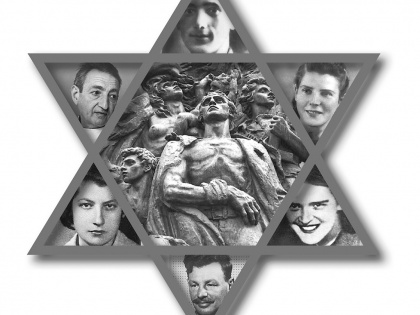
Not much is known of the many attempts to resist the Nazis through acts of physical resistance, which was but one form of resistance against the Nazi machine of death...
So few survived these heroic acts against overwhelming odds in the ghettos, camps and forests of Europe. The tenacious who continued resistance to the Nazis, even in Auschwitz, remains an inspiration not only for the Jewish people in its ongoing struggle for a secure national homeland, but for all those committed to the right of every human being to live in freedom, dignity and peace.
Here are a select few of the many many examples of Jewish physical resistance:
Holland February 1941 Jews resist Nazi attack on Jewish quarter of Amsterdam, killing a Dutch Nazi
Ilja, Poland March 1942 Two Jewish partisan leaders, Josef Rodblat and David Rubin, lead Jewish resistance group; 900 killed
White Russia May 1942 In Lida & Stolpce unarmed Jewish youth breakout of SS police control, escape into woods & join partisan groups
Berlin, Germany May 1942 Jewish students, led by Herbert Baum, display anti-Nazi posters. Baum and 152 other students shot
Parczew, Eastern Galicia 1944-45 A Jewish Polish officer, Alexande Skonicki, leads attacks of Polish partisan units on German military targets.
Jewish partisans under his command, led by Yehiel Grynszpan, successfully acquire ammunition from German military posts
Treblinka, Poland February 1943 Young woman snatches rifle, shoots dead two Nazis and wounds a third
Warsaw, Poland 19 April 1943 Warsaw Ghetto uprising led by Mordechai Anielewicz. Jews resist German troops, tanks and artillery; they manage to drive out the Germans from the ghetto
Warsaw, Poland 8 May 1943 Jewish underground headquarters destroyed. Anielewicz and 56,000 Jews killed or deported during revolt. 15,000 manage to escape
Koldyczewo, Poland 1944 Jews kill 10 SS guards at slave labour camp. Hundreds of prisoners escape to join partisans
Auschwitz, Poland 7 October 1944 Polish, Hungarian & Greek Jews, using explosives stolen by 4 Jewish girls, blow up 1 of the 4 crematoria








Leave a Comment on Israel Forever